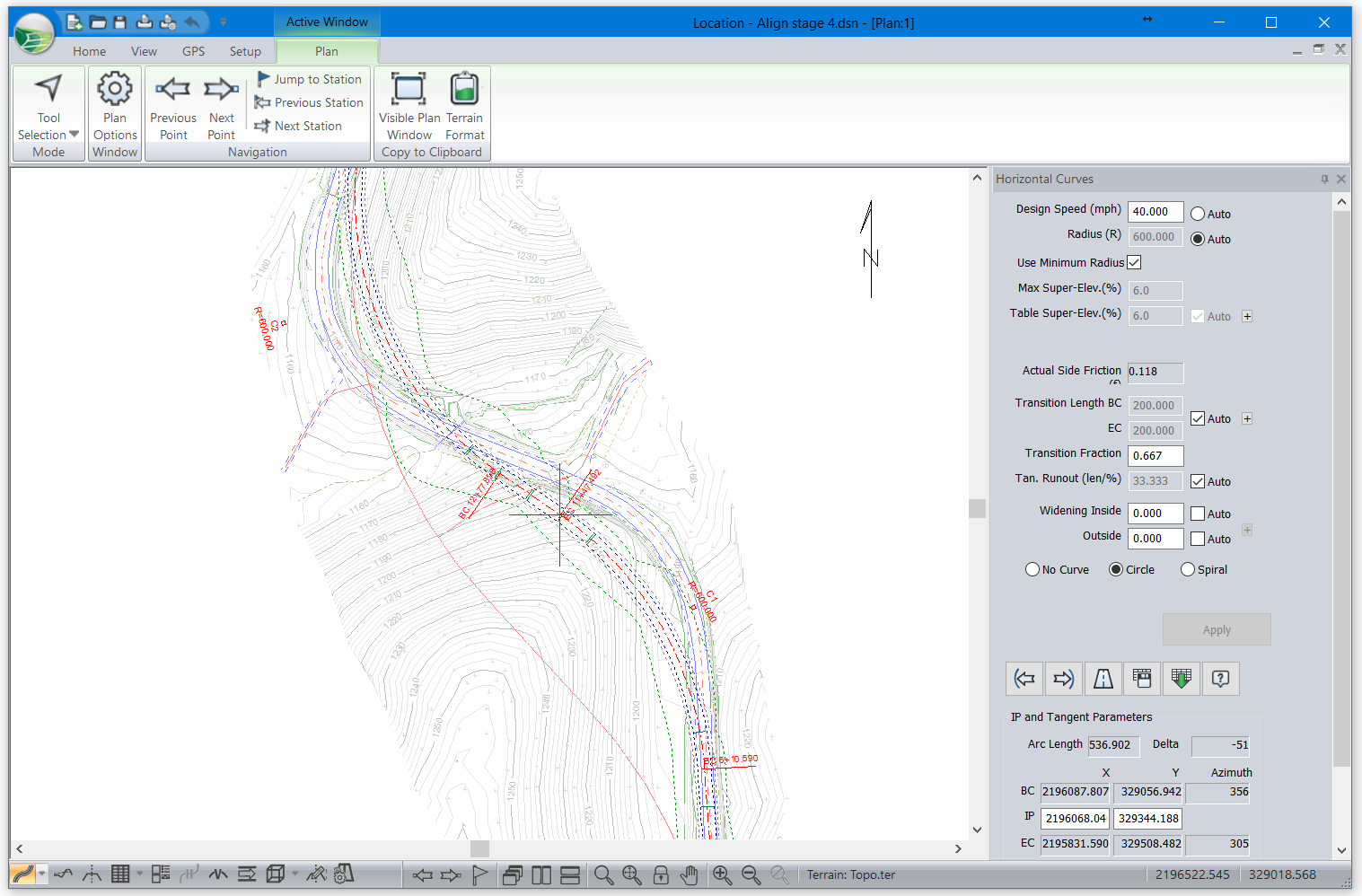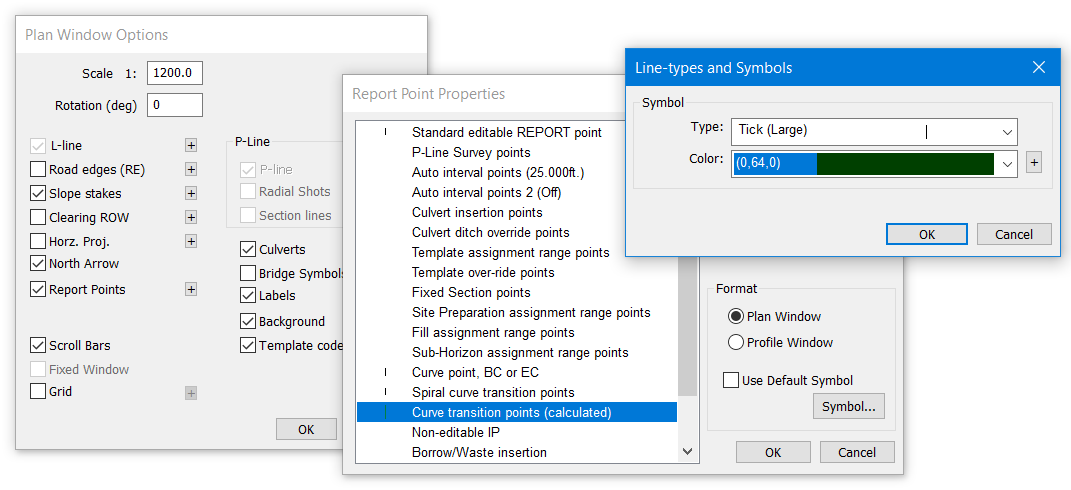Setting Up a Screen Layout
Updated August 22, 2024
This article applies to:
- RoadEng Civil
- RoadEng Forestry
This Knowledge Base article is an excerpt from one of our tutorial files. The files referenced in the article, as well as the full tutorial document, are available in our Tutorial Installer.
In this exercise, you will configure the window locations and some window options to emphasize horizontal curves (for the next exercise).
Note: Refer to Getting Started section for file install folders (<RoadEngCivil> and <Defaults and Layouts>)
 File | Open <RoadEngCivil>\Location\Align stage 4.dsnx in Location Module. This should look similar to your design at the end of the previous exercise.
File | Open <RoadEngCivil>\Location\Align stage 4.dsnx in Location Module. This should look similar to your design at the end of the previous exercise.Open the plan view: click on Activate Plan Window
 in the windows toolbar.
in the windows toolbar.Restore the Activate Horizontal Curve Panel
 . Note that once the panel is open the user can click on the Auto Hide
. Note that once the panel is open the user can click on the Auto Hide  to maximize the screen viewing space.
to maximize the screen viewing space.Windows can be arranged by using the buttons Cascade, Tile Vertically, or Tile Horizontally. Click on View | Cascade, Tile Vertically, Tile Horizontally (select one of the buttons)
Note: double clicking in any window title bar will maximize it. Arrange your screen to resemble Figure 5‑1.

Figure 1: A Screen Layout with Docked Curve Panel
and Maximized Plan Window
Open the Plan Options… dialogue box (right click | Plan Options…) and turn on Background display (figure below, left).

Figure 2: Plan Window Options, Report Point Properties
and Symbol Formatting Dialogue Boxes
Click the
 button beside Report Points to pop up the Report Point Properties dialogue box (figure above, center).
button beside Report Points to pop up the Report Point Properties dialogue box (figure above, center).Select Curve Transition Points (calculated) in the list and then press the Symbol… button. Change the symbol to Tick (Large) and dark green (0,64,0) (as in figure above, right). Press OK, OK, and OK again to accept changes and close all dialogue boxes.
The changes you’ve made in the last few steps have changed the look of the screen but they have not modified the actual design – no alignment or cross section changes. These changes and the rest of the Screen Layout can be saved to your hard drive for later use.
Save the current configuration in a new screen layout:
-
View | Save button
-
Type Training Test in the “File name:” field. Refer to figure on next page.
-

Figure 3: Saving a Screen Layout: View | Save Button
-
Press Save button
You have just created a screen layout that will appear in your Screen Layouts tool bar item for easy retrieval. Training Test.dlt is now in the dropdown menu.
Retrive another Screen Layouts from the drop down menu, training Curve H.dlt.
Try opening some of the other screen layouts available.
Note: When accessing screen layouts or opening new windows (Profile, Plan, Section, Data, 3D, Multi-Plot) window can get lost behind one another or minimized. Using View | Cascade button can be useful find open windows.
Screen Layout Facts
The Custom folder is often defined on a network drive so that the layouts are accessible to all users.
You can change the Softree folder (RoadEng Settings and Layouts folder) from the menu Setup | Location Setup | Install tab. Do not do this unless you understand the consequences; more than just screen layouts are stored in this folder. The most common change is to put Defaults and Layouts Folder into your Documents folder (private to one user only).
When you have finished experimenting with screen layouts,
 File | Close, do not save changes.
File | Close, do not save changes.